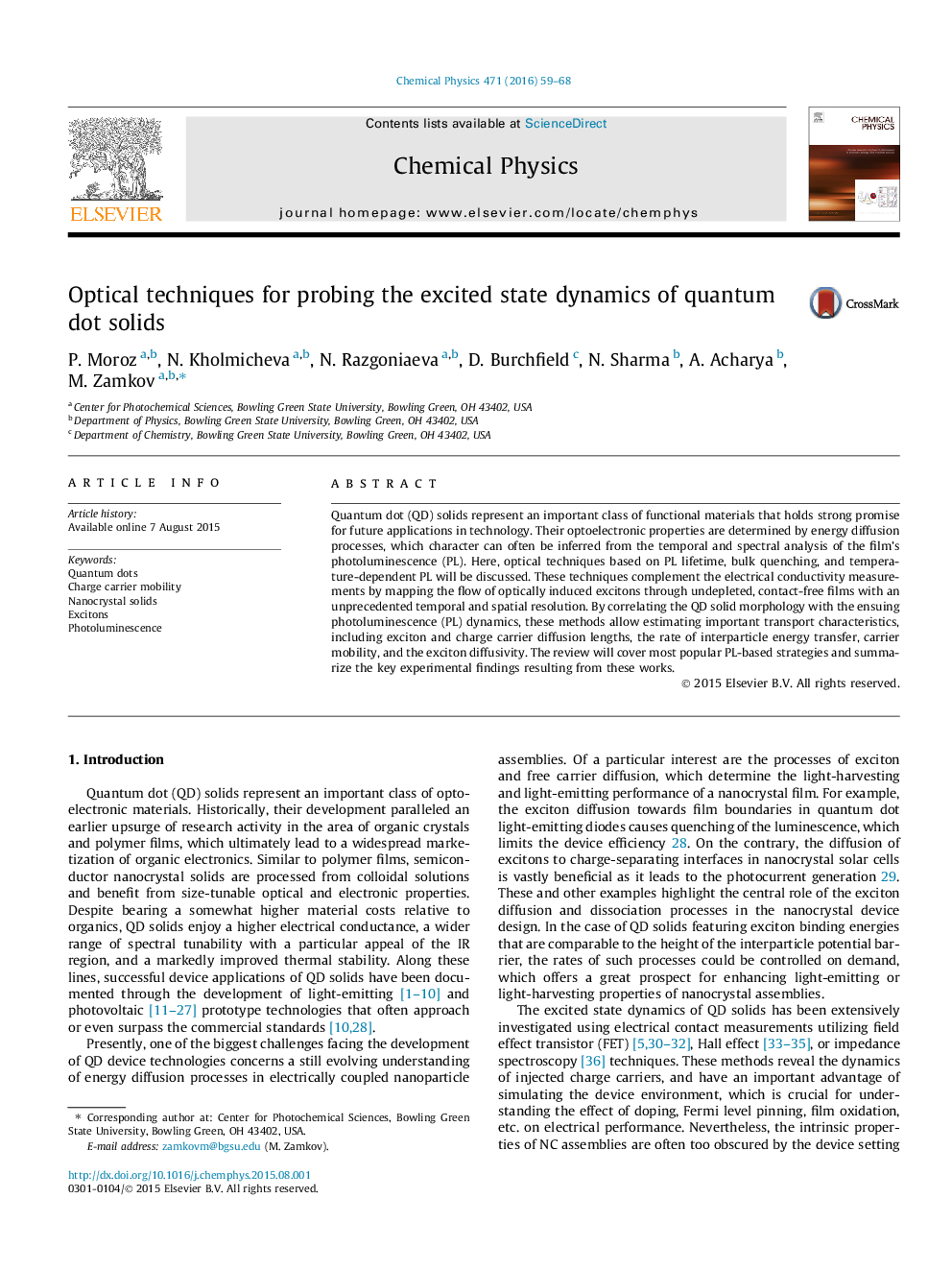| Article ID | Journal | Published Year | Pages | File Type |
|---|---|---|---|---|
| 5372953 | Chemical Physics | 2016 | 10 Pages |
â¢Optical techniques represent a powerful tool for probing exciton diffusion in QD solids.â¢Exciton dissociation in QD solids is caused by charge tunneling to traps and other dots.â¢Exciton and free-carrier lifetimes are given by fast and slow components of PL decay.â¢Surface PL offers valuable information on the type and density of traps in QD solids.
Quantum dot (QD) solids represent an important class of functional materials that holds strong promise for future applications in technology. Their optoelectronic properties are determined by energy diffusion processes, which character can often be inferred from the temporal and spectral analysis of the film's photoluminescence (PL). Here, optical techniques based on PL lifetime, bulk quenching, and temperature-dependent PL will be discussed. These techniques complement the electrical conductivity measurements by mapping the flow of optically induced excitons through undepleted, contact-free films with an unprecedented temporal and spatial resolution. By correlating the QD solid morphology with the ensuing photoluminescence (PL) dynamics, these methods allow estimating important transport characteristics, including exciton and charge carrier diffusion lengths, the rate of interparticle energy transfer, carrier mobility, and the exciton diffusivity. The review will cover most popular PL-based strategies and summarize the key experimental findings resulting from these works.
Graphical abstractDownload high-res image (187KB)Download full-size image
